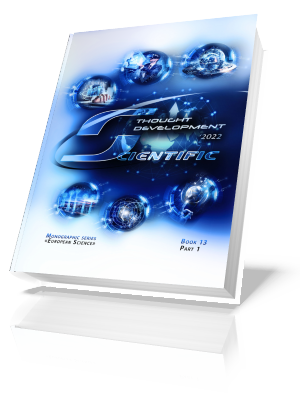LEARNING AND TEACHING IN THE CONTEXT OF OUR BRAIN RESERVES
DOI:
https://doi.org/10.30890/2709-2313.2022-13-03-010Keywords:
educational process, motivation, thought process, brain, learning, trainingAbstract
The paper analyzes the situation of the correlation between knowledge and skills, the need for their use in relation to the learning system. Language competence is presented through the prism of general didactic principles. Some peculiarities of providinMetrics
References
Bunderson, C. V. (2017) The validity of the Herrmann Brain dominance instrument.http://citeseerx.ist.psu.edu/viewdoc/download?doi=10.1.1.595.537&rep=rep1&type=pdf
Chumak, E. (2019) The key to an employee's heart. HR manager, 2019. 8. [Electronic resource]. Access mode: https://e.hrliga.com/node/2266
Comenius, J. A. (1982) Selected Pedagogical Works. M.: Pedagogica, 1982. Т. 2. 354.
Efimova, I. (2013) Human capital as a factor in maximizing the competitive position of universities in the global market of educational services. Proceedings of the International Scientific-Practical Conference within the III All-Russian Scientific Forum "Science of the Future –Young Science". In 2 vols. ed. by Z.H. Saralieva. Т. 2. 415-420.
Gorily, A. G. (2001) History of Social Work in Ukraine. Ternopil: TANG, 2001. 68.
Gubareva, E. (2020) "To be a leader is to give hope to humanity stemming from responsibility". HR Manager, 2020. 8. https://e.hrliga.com/node/2266
Іlyin, E. P. (2009) Psychology of creativity, creativity, giftedness. Peter; St. Petersburg; 2009. 434.
Johnston, G. (2020) Human capital in the post-quarantine era. Projections. Human Resource Manager, 2020. 8 [Electronic resource]. Access mode: https://e.hrliga.com/node/2265
Lepekha, E. (2019) Building a productive corporate culture: from plan to implementation. HR manager, 2019. 1. 30-35.
Malichevsky, V. (2019) Effective training system in the company: structure and content. HR manager, 2019. 12. 18-26.
Mermann, E. (2007) Communication and communicability. Translated from German. H.: Humanitarian Center, 2007. 296.
Montaigne, M. (1979) Experiments. In 3 books. Vol. 1. Moscow: Publishing House of the Academy of Sciences of the USSR, 1979. 557.
Nerrmann, N. (1996) The whole Brain Business Book. MCGRAW-HILL Professional, 1996. 334.
Nerrmann, N. (2021) Creativity, Learning, and the Specialized Brain In the Context of Education for Gifted and Talented Children. https://www.thinkherrmann.com/hubfs/Articles/Creativity__Learning__and_the_Specialized_Brain.pdf.
Potekhina, Y. P., Filatov, D. S. (2017) The role of the limbic system in the genesis of psychoviscicrosomatic disorders. Russian Osteopathic Journal. 2017. № 1-2 (36-37). 78-87.
Prots, N. (2018) Communication – the "golden key" to staff motivation. HR manager, 2018. 3. 21-27.
Sergienko, E. A., Dozortseva, A. V. (2018) Functional asymmetry of brain hemispheres. http://cerebral-asymmetry.narod.ru/Sergeenko.pdf
Soldatov, A. (2017) Creating a business training: structure and materials. I am a business trainer. Secrets of training adult audiences. [Electronic resource]. Access mode: https://www.cfin.ru/education/training_program.shtml
The Future of Jobs and Jobs Training (2017). Pew Research Center. https://www.pewresearch.org/internet/2017/05/03/the-future-of-jobs-and-jobs-training/
Thorne, K., McKay, D. (2001) Coaching. The trainer's handbook. SPb: Peter, 2001. 208.
Vakulyk, I. I. (2013) The formation of a scientific picture of the world in the modern language space. Movable and conceptual pictures of the world. 2013. №. 43 (1). 203-209.
Vakulyk, I. I. (2015) Naukova terminolohiia yak faktor formuvannia naukovoi kompetentsii [Scientific terminology as a factor for forming language competence]. ScienceRise. Technology center. 2015. Т. 9. №. 1. 14.
Downloads
Published
How to Cite
Issue
Section
License
Copyright (c) 2022 Authors

This work is licensed under a Creative Commons Attribution 4.0 International License.


